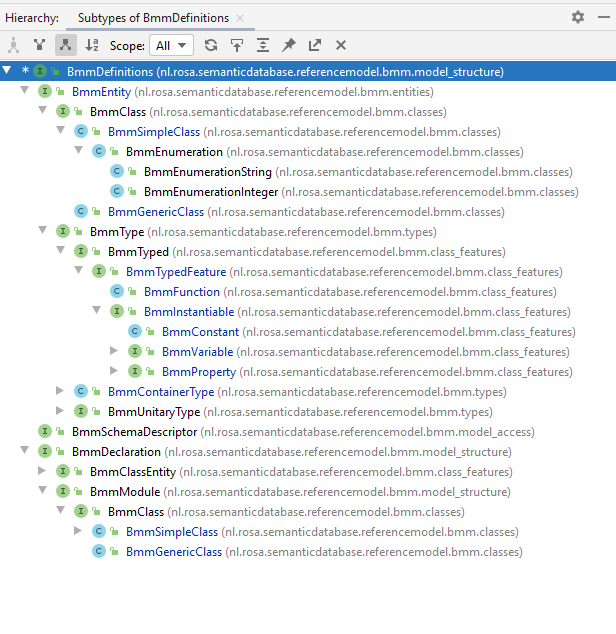Hi,
I think there is a problem in the class-scheme of BMM, latest version.
It is about BMM_MODULE, it is not yet defined in the class-descriptions, but it found its way in some UML-drawings in the documents. Especially the one in paragraph 4.1 and 7.1
In these drawings is BMM_MODULE just between BMM_CLASS and BMM-DECLARATION, and BMM_DECLARATION is derived from BMM_DEFINITIONS.
There is also another route from BMM_DEFINITIONS to BMM_CLASS, that is over BMM_ENTITY that, according the class-description also is derived from BMM_DEFINITIONS, but it isn’t in the drawing. Maybe it is a left-over, which needs to be removed.
Because:
If BMM_ENTITY is derived from BMM_DEFINITIONS, I think this is an error, because then there are two routes from BMM_CLASS to BMM_DEFINITIONS, in one route BMM_CLASS is also derived from BMM_DECLARATION, and in the other it isn’t.
It is a Diamond-confusion. A compiler needs to guess what is happening, and good compilers do not guess.
I am not sure, but it could be that the problem is solved when BMM_ENTITY is stopped being derived from BMM_DEFINITIONS. Another solution would be the removal of BMM_MODULE, but then BMM_CLASS would not anymore derive from BMM_DECLARAT|IONS and that would give problems in properties which assume this derivation.
I am interested in your comments
Best regards
Bert Verhees

